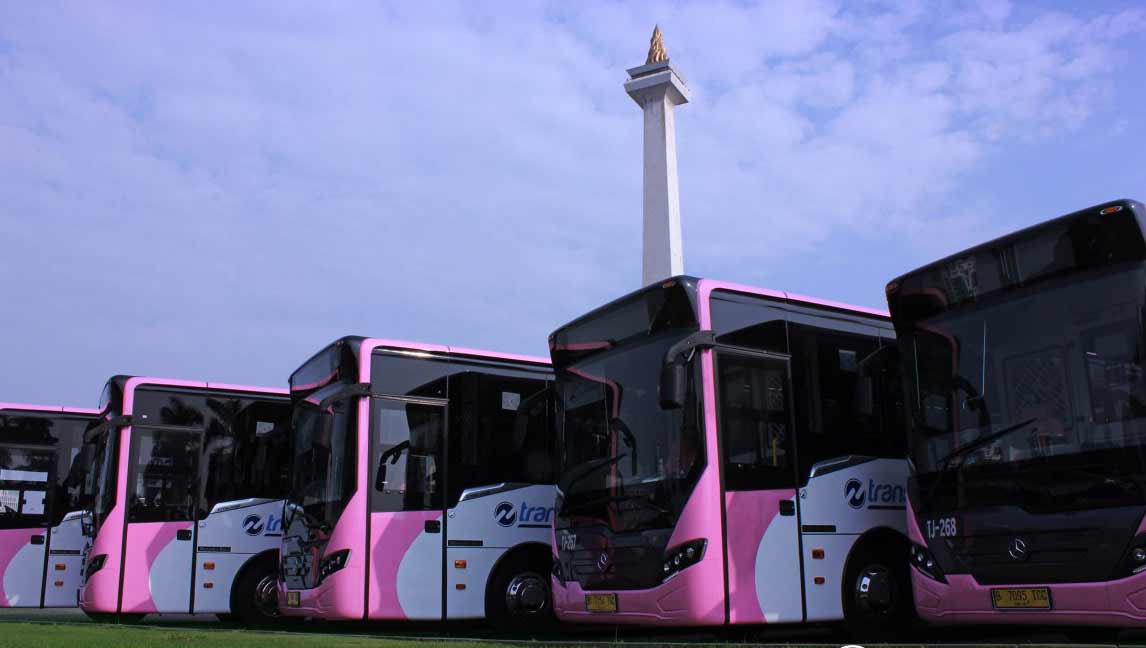CEO Interview: Agung Wicaksono, President Director of PT Transportasi Jakarta
By Shoeb Kagda
What makes a city livable? Green spaces, walkability, cleanliness, affordability are all important factors but most city dwellers will rank mobility high on the list. A good transportation system has direct benefits to people, businesses, the environment and the overall economy.
It is no secret that Jakarta has struggled with traffic gridlock for nearly two decades. Indonesia’s capital city has many charms but unfortunately visitors often mention being stuck in traffic as the defining experience of their visit and locals simply shrug their shoulders and grit their teeth.
But that does not mean no efforts have been made to find a solution. In fact last year, the TransJakarta busway celebrated its 15th anniversary of serving the city. The first bus rapid transit (BRT) system in Asia, TransJakata has redefined public transportation and changed public attitudes towards taking the bus.
As noted by Gustavo Petro, the Columbian politician and mayor of Bogota, a developed country is not where the poor have cars. It’s where the rich use public transportation.
That is the aim of Agung Wicaksono, the dynamic president director of PT Transportasi Jakarta or more popularly known as Transjakarta. Having been in the job for three months, Agung has ambitious plans not just for Transjakarta but the overall public transportation system in Jakarta. He wants to move public transportation in the greater Jakarta region up several notches.
“Before 2004, we had public transport 1.0 as Jakarta was served by privately owned transport companies. With Transjakarta we entered 2.0 with a government operated public transport system.”
In 2014, the company was converted into a PT (limited liability company) and growth accelerated. “It was at that time that we entered the era of transport 3.0 as we increased the number of buses from 300 to 900,” notes Agung.
Last year, Transjakarta buses carried 190 million passengers along 13 corridors and 160 routes. During the Asian Games, daily passenger traffic hit a record of 720,000 but Agung believes there is much more capacity still untapped. The plan is to increase the number of routes to 160 and the number of corridors to 15, thus covering a much larger area of the city.
“We need to see infrastructure as a way of changing mindsets and culture,” notes Agung. “Indonesians travelling to Japan and Singapore do not mind taking public transport so they will also be open to using public transport at home if the service meets the right standards.”
Integration
The success of a great public transport system is highly dependent on how well it is integrated with other transport systems so as to provide a seamless service to its users. To this end, Transjakarta is working towards integrating the busway system to the soon to be launched Jakarta MRT as well as to local private transport vehicles called Angkots.
Transjakarta is currently studying all its routes to ensure that there are enough routes to ferry passengers from their homes and offices to the nearest MRT station and the introduction of an electronic payment system that uses only one card across all the various public transport systems.
Jakarta governor Anies Baswedan has also recently launched Jaklinko to integrate the Angkots to the busway to create a more professionally run and operated system. With Jaklinko, Angkots will to meet certain minimum standards to be certified and drivers will be paid a month salary. Passengers will ride for free.
“The system has been transformational as more than 600 units are already operating,” says Agung. “Drivers have regular income which is higher than the minimum wage and passengers have a safer ride.”
While still subsidized by the government, PT Transjakarta is exploring additional non-fare revenue streams to boost its bottom-line. This includes advertising on buses; providing telecommunication services; naming rights on bus-stops and allowing for retail stores at its major hubs.
Other plans include introducing electric buses and minivans to reduce the carbon footprint and expansion into non-urban areas.
It has been a longtime coming but public transportation is starting to redefine mobility in the Indonesian capital. The roads may still be clogged with traffic but now commuters have a choice that offers them comfort and convenience.
“I want to make Jakartans proud to take public transport,” he says. “To make it cool to ride the bus or the train.”
A City in Motion: Redefining Mobility in Jakarta

